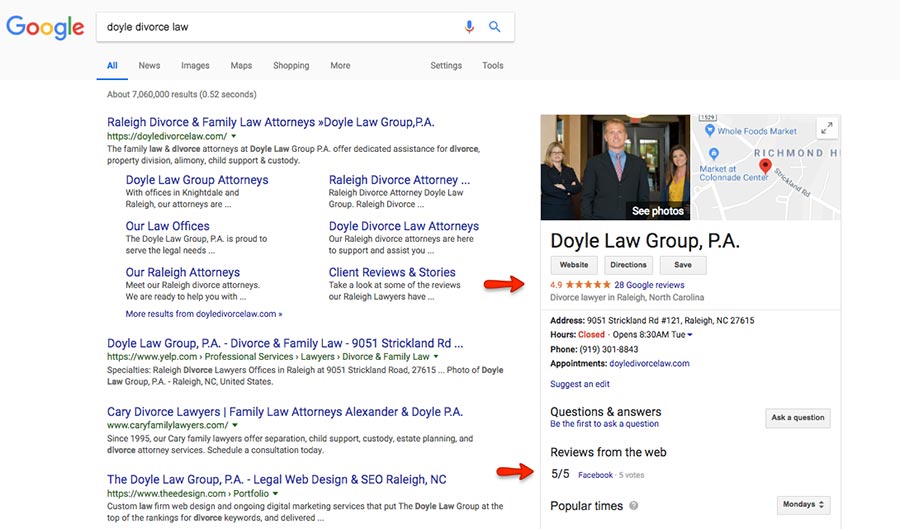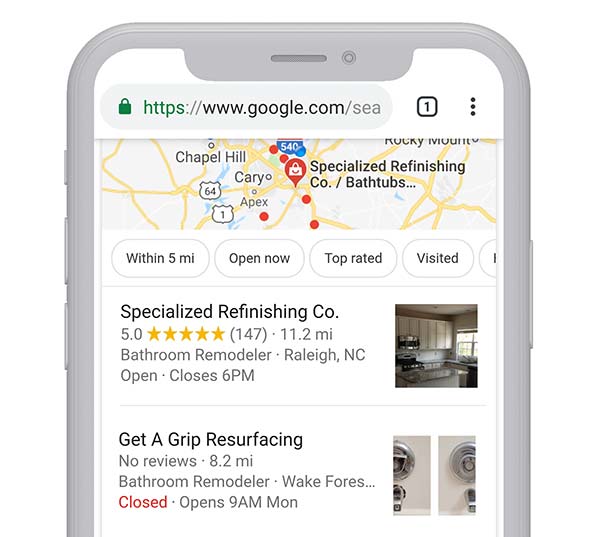In today’s digital world, Google reviews are essential for building trust, boosting your local search rankings, and attracting more customers. Getting Google reviews requires a proactive and strategic approach—it’s not just about waiting for reviews to come in; it’s about actively encouraging satisfied customers to share their experiences. If you’re wondering how to get Google reviews, this guide offers proven strategies, tools, and tips to increase your review count and enhance your online reputation.
Why Google Reviews Matter for Your Business
Before exploring how to get more Google reviews, it’s worth understanding why they’re so valuable. Google reviews influence several key areas of your business’s success:
- Local SEO: Reviews are a major factor in local search rankings. More positive reviews can help your business appear in Google’s “Local Pack,” increasing visibility.
- Customer Trust: Potential customers rely on reviews to assess your credibility. A strong rating can set you apart from competitors.
- Click-Through Rates: Higher ratings and more reviews often lead to more clicks from search results, driving traffic to your site.
- Feedback Insights: Reviews offer direct feedback, helping you improve your offerings and customer experience.
With these benefits in mind, let’s dive into setting up your profile and strategies to encourage customers to review us on Google.
Setting Up for Google Reviews
Creating and Optimizing a Google Business Profile

Establishing Your Presence on Google
The first step in harnessing the power of Google reviews is to get a Google Business Profile. This free tool allows businesses to manage their online presence across Google, including Search and Maps. To set up your profile, you need to claim your business on Google, verify your business information, and ensure that all details are accurate and up-to-date.
Enhancing Your Profile for Maximum Impact
Once your business is verified, the next step is optimization. This involves:
- Providing Comprehensive Business Information: Include all relevant details such as your business name, address, phone number, website, and hours of operation. Consistency in this information across the web is crucial for SEO.
- Adding High-Quality Photos and Videos: Visuals can significantly impact a customer’s perception of your business. Regularly update your profile with high-quality images of your products, services, and business premises.
- Utilizing Keywords: Incorporate relevant keywords into your business description and posts. This helps Google understand what your business is about and improves your visibility in relevant searches.
- Encouraging Customer Interaction: Post updates, special offers, and events to engage with your audience. This activity signals to Google that your business is active and relevant, which can aid in higher search rankings.
- Monitoring and Responding to Reviews: Actively monitor your reviews and respond to them, whether they are positive or negative. This engagement not only builds trust with customers but also signals to Google that you value customer feedback.
Understanding Google’s Policies on Reviews
Adhering to Google’s Review Guidelines
Google has strict guidelines to ensure that reviews are authentic, relevant, and useful. Understanding and adhering to these guidelines is crucial for businesses:
- Prohibition of Fake Reviews: Google strictly prohibits fake reviews, whether they are positive reviews for your own business or negative reviews for competitors. Violations can lead to penalties, including removal of reviews or suspension of your business profile.
- No Incentivization for Reviews: Offering incentives in exchange for reviews is against Google’s policies. This includes discounts, freebies, or monetary rewards. You can encourage reviews, but they must be given freely and voluntarily by customers.
- Handling Negative Reviews Appropriately: Instead of trying to remove negative reviews, focus on addressing the customer’s concerns. Respond professionally and consider the feedback as an opportunity to improve your business.
- Avoiding Review Gating: Review gating, the practice of filtering candidates before asking them to leave a review to ensure only positive reviews, is prohibited. Google encourages all customer feedback, positive or negative.
By setting up and optimizing your Google Business Profile and understanding Google’s review policies, you can effectively leverage Google reviews to enhance your business’s online presence and reputation. This foundation is essential for building a robust online profile that attracts and retains customers.

Strategies to Get Google Reviews
Keep reading and we’ll go into more details on how to get more Google reviews. Below are seven proven strategies to encourage customers to share their feedback.
Directly Asking for Reviews
Best Practices for Asking Customers in Person
Asking for reviews in person can be incredibly effective, but it requires tact and a genuine approach. Here are some best practices:
- Personal Connection: Establish a rapport with the customer. A review request is more likely to be honored if it comes after a positive interaction where the customer feels valued and heard.
- Timing is Key: Choose a moment when the customer is most satisfied with your service or product. This could be right after a successful transaction, at the end of a pleasant service experience, or when they express satisfaction verbally.
- Be Specific and Direct: While being polite and non-intrusive, be clear about what you’re asking. For instance, “If you’re happy with our service today, we’d really appreciate it if you could share your experience in a Google review.”
- Educate on the Process: Not all customers are tech-savvy. Offer a quick explanation or a simple guide on how to leave a Google review, which can significantly increase the likelihood of them following through.
- Express Gratitude: Show appreciation for their business and potential review. A simple thank you can go a long way in making customers feel valued and more inclined to leave a review.
Here’s a sample script you can adapt: “Hi [Customer Name], thanks for choosing us! We’re glad you enjoyed your experience. If you have a minute, could you review us on Google? It helps us a lot, and here’s a link to make it easy: [Insert Link].”
Timing and Approach
The timing and approach of your request can greatly influence the customer’s willingness to leave a review:
- Identify the Right Moment: The best time to ask is after you’ve delivered excellent service or when a customer expresses satisfaction. Avoid asking during a busy or stressful time in the customer’s experience.
- Approach with Sensitivity: Gauge the customer’s mood and willingness to engage. If they seem rushed or disinterested, it might not be the right time to ask for a review.
- Personalize Your Request: Tailor your request to the individual experience of the customer. Mention specific aspects of their interaction with your business to make the request more personal and relevant.
- Non-Intrusive Follow-Up: If a customer agrees to leave a review, a gentle follow-up can be effective. This could be a reminder card they take with them or a follow-up message if you have their contact details.
By following these best practices, businesses can effectively and respectfully encourage customers to leave valuable feedback in the form of Google reviews. This direct approach, when done correctly, can significantly enhance a business’s online presence and credibility.
Utilizing Email Campaigns
Crafting Effective Review Request Emails
Email campaigns can be a powerful tool for gathering Google reviews, but they need to be executed with care and precision. Here’s how to craft effective review request emails:
- Personalization is Key: Address the customer by name and reference their specific interaction with your business. Personalized emails resonate more and show that you value the customer’s individual experience.
- Clear and Concise Message: Your email should be straightforward and to the point. Clearly state that you are seeking feedback and would appreciate a Google review. Avoid lengthy content that could distract from the main request.
- Direct Link to Google Reviews: Include a direct link to your Google review page. The easier you make it for customers to leave a review, the more likely they will do it. Embedding the link in a button or a noticeable call-to-action can increase click-through rates.
- Express Gratitude: Thank the customer for their business and let them know how much their feedback means to you. A tone of genuine appreciation can motivate customers to take action.
- Mobile-Friendly Design: Ensure that your email is optimized for mobile devices. Many users check their emails on smartphones, and a mobile-unfriendly design can deter them from leaving a review.
Here’s an example email template:
Subject: We’d Love Your Feedback!
Dear [Customer Name],
Thank you for your recent visit! We hope you enjoyed [Product/Service]. Your feedback helps us improve and assists others in making informed choices.
Could you take a moment to leave us a review on Google? It’s quick and easy—click here: [Insert Link].
Thanks for your support!
[Your Business Name]Automation Tools for Sending Review Requests
Leveraging automation tools can streamline the process of sending out review request emails and increase efficiency:
- Choosing the Right Tool: Platforms like Mailchimp, Constant Contact, and HubSpot offer email automation services. These tools allow you to create, schedule, and send emails to your customers automatically.
- Segmentation and Targeting: Use these tools to segment your email list based on customer behavior or purchase history. Targeted emails can lead to higher engagement and more reviews.
- Scheduling and Frequency: Automate the timing of your emails to be sent post-purchase or after a service is rendered. Be mindful of the frequency; too many emails can lead to customer fatigue.
- Tracking and Analytics: These tools provide valuable insights into open rates, click-through rates, and overall engagement. Use this data to refine your email campaigns and improve their effectiveness.
- A/B Testing: Test different versions of your email (like varying the subject line, email content, or call-to-action) to see which performs better and optimize your approach based on real data.
By effectively utilizing email campaigns and automation tools, businesses can significantly increase their chances of receiving more Google reviews. These reviews, in turn, enhance their online visibility and credibility, contributing positively to their SEO efforts.
SMS and Messaging Platforms
Leveraging Text Messages for Review Requests
SMS and messaging platforms offer a direct and effective way to reach customers for Google review requests. Here’s how to leverage these tools:
- Immediate and Personal Connection: Text messages provide a direct line to your customers. They are personal and have a high open rate, making them an excellent medium for review requests.
- Concise and Clear Messaging: Keep your message short and to the point. A brief, friendly request with a direct link to your Google review page can be very effective. For example, “We hope you enjoyed our service! If you have a moment, we’d love your feedback: Leave a Review.”
- Timing the Message: Send the text at an opportune time, preferably soon after the customer has availed of your service or product. This ensures that their experience is fresh in their mind, increasing the likelihood of them leaving a review.
- Personalization: Personalize the message with the customer’s name or reference to their specific experience with your business. This personal touch can significantly increase engagement.
Compliance with Messaging Regulations
When using SMS and messaging platforms for review requests, it’s crucial to comply with legal regulations:
- Obtain Consent: Before sending any messages, ensure that you have explicit consent from the customer to contact them via text. This is not just best practice; it’s a legal requirement in many jurisdictions.
- Provide an Opt-Out Option: Always include an option for recipients to opt-out of receiving further messages. This respects customer preferences and aligns with regulations like the TCPA (Telephone Consumer Protection Act).
- Respect Privacy: Be mindful of customer privacy. Do not share or use their phone numbers for purposes other than what they consented to.
- Avoiding Spammy Content: Ensure that your messages are relevant and valuable to the recipient. Avoid sending too many messages in a short period, which can be perceived as spam.
- Record Keeping: Keep records of consent and communications. In case of any complaints or legal issues, these records will be crucial for demonstrating compliance with regulations.
By effectively using SMS and messaging platforms while adhering to regulatory guidelines, businesses can enhance their strategy for acquiring Google reviews. This approach not only helps in improving their online reputation but also ensures a respectful and legal engagement with customers.
Using Review Generation Tools
Overview of Popular Review Generation Tools
In the realm of online reputation management, review generation tools have become indispensable for businesses looking to enhance their digital presence. These tools automate the process of soliciting and managing reviews, making it easier and more efficient. Some popular review generation tools include:
- Podium: This tool is renowned for its ability to streamline customer interactions and gather reviews through messaging. It’s particularly effective for businesses that prioritize SMS communications.
- Yotpo: Ideal for e-commerce platforms, Yotpo not only helps in generating reviews but also in leveraging them for marketing purposes.
- BirdEye: BirdEye offers a comprehensive suite of tools for review generation, monitoring, and responding. It’s known for its robust analytics and reporting features.
- Trustpilot: Widely used across various industries, Trustpilot excels in collecting and displaying reviews, enhancing trust and transparency for businesses.
- ReviewTrackers: This tool focuses on monitoring reviews across multiple platforms, including Google, and provides insights to improve customer experience.
Each of these tools offers unique features and can be selected based on the specific needs and scale of a business.
Integrating These Tools with Business Processes
To maximize the benefits of review generation tools, integrating them into existing business processes is crucial:
- Seamless Integration with Customer Relationship Management (CRM): Linking these tools with your CRM system can automate the process of sending review requests following customer interactions, purchases, or service completions.
- Automating Post-Transaction Review Requests: Set up triggers for review requests after a transaction is completed. This ensures timely requests when the customer’s experience is still fresh in their mind.
- Incorporating into Customer Service Workflows: Integrate review requests into your customer service follow-ups. After resolving a customer’s issue or providing service, a review request can be an effective way to gauge satisfaction.
- Training Staff: Educate your team on the importance of reviews and how to encourage customers to leave feedback. Ensure they understand how to use the review generation tools effectively.
- Monitoring and Responding to Reviews: Use these tools not just to gather reviews but also to monitor and respond to them. Many tools offer functionalities to alert you when new reviews are posted, allowing for timely responses.
- Analyzing Feedback for Improvement: Utilize the analytics features of these tools to gain insights into customer satisfaction and areas for improvement. This data can be invaluable for strategic planning and enhancing customer experience.
By effectively using review generation tools and integrating them into business processes, companies can significantly enhance their ability to gather and manage Google reviews. This, in turn, can lead to improved online visibility, reputation, and customer trust.
Incorporating Review Requests into Marketing Materials
Adding Review Links to Business Cards, Flyers, and Email Signatures
Incorporating Google review requests into your marketing materials is a subtle yet effective strategy to boost your online reputation. Here’s how to do it:
- Business Cards: Add a QR code or a short URL link to your Google review page on your business cards. This makes it easy for customers to access your review page directly from their mobile devices.
- Flyers and Brochures: Include a call-to-action (CTA) on your flyers and brochures, encouraging customers to leave a review. Accompany this with a QR code or link, along with brief instructions on how to leave a review.
- Email Signatures: Utilize your regular email communications by adding a review request in your email signature. A simple line like “Your feedback matters! Leave us a Google review” can be effective. Ensure the link is short and unobtrusive but noticeable.
These tactics serve as constant, gentle reminders for customers to leave reviews, capitalizing on the various touchpoints you have with them.
Creative Marketing Strategies to Encourage Reviews
Beyond the standard methods, there are creative ways to integrate review requests into your marketing strategy:
- Social Media Campaigns: Run campaigns on your social media platforms encouraging customers to share their experiences. Feature customer testimonials and reviews, highlighting the value you place on customer feedback.
- In-Store Displays: If you have a physical location, set up displays or posters with QR codes and instructions on how to leave a Google review. This can be particularly effective in areas where customers experience high satisfaction, like at the point of sale or service completion.
- Email Marketing: In your email newsletters, include a section dedicated to customer reviews. Feature a few positive reviews and provide a link for others to share their experiences. This not only showcases positive feedback but also prompts others to contribute.
- Website Integration: On your website, especially on the testimonial or contact page, include a CTA for leaving Google reviews. You can also create a dedicated page with instructions on how to leave a review.
- Event Promotion: During events, workshops, or webinars, remind attendees to leave a review. This can be done verbally at the event or through follow-up communications.
- Leveraging Influencers or Brand Ambassadors: If you work with influencers or brand ambassadors, encourage them to ask their followers to leave reviews as part of their promotion.
By creatively incorporating review requests into your marketing materials and strategies, you can significantly increase the number and quality of reviews your business receives. This not only enhances your online reputation but also engages customers and reinforces their positive experiences with your brand.
Responding to Existing Reviews

The Impact of Responses on Getting More Reviews
Responding to existing reviews, whether positive or negative, plays a crucial role in not only managing your online reputation but also in encouraging more customers to leave their feedback. Here’s why:
- Building Trust: When potential customers see that a business actively responds to reviews, it builds trust. It shows that the business values customer feedback and is committed to customer satisfaction.
- Encouraging Engagement: A business that responds to reviews can encourage other customers to leave their own feedback, as they see that their opinions will be heard and valued.
- Improving Visibility: Regularly responding to reviews can positively impact your SEO. Google’s algorithms favor active engagement, potentially leading to higher search result rankings.
- Damage Control: In the case of negative reviews, timely and thoughtful responses can mitigate damage to your reputation by showing that you take customer concerns seriously and are proactive in resolving issues.
Tips for Responding to Both Positive and Negative Reviews
- Responding to Positive Reviews:
- Show Appreciation: Always thank the customer for their review and for choosing your business.
- Be Personal: Customize your response to the specifics of their review. This personal touch makes the customer feel acknowledged.
- Encourage Repeat Business: Use the opportunity to invite them back or inform them about other products or services.
- Responding to Negative Reviews:
- Stay Professional and Calm: Always respond professionally, regardless of the tone of the review. Avoid being defensive.
- Acknowledge and Apologize: Acknowledge the customer’s issue and apologize for any negative experience they had.
- Offer to Make it Right: Provide a solution or ask the customer to contact you offline to resolve the issue. This shows other customers that you are committed to resolving problems.
- Learn from Feedback: Use negative reviews as feedback to improve your business.
- General Best Practices:
- Respond Promptly: Aim to respond to reviews as quickly as possible. A prompt response shows that you are attentive and engaged.
- Keep it Brief and On-Point: While being personable is important, keep your responses concise and relevant.
- Use a Consistent Tone and Voice: Ensure that your responses align with your brand’s tone and voice. Consistency is key in building your brand image.
By effectively responding to both positive and negative reviews, businesses can significantly enhance their online reputation and encourage a continuous stream of customer feedback. This engagement not only benefits SEO but also fosters a positive relationship with both existing and potential customers.
Incentivizing Reviews (Ethically)
Understanding What is Allowed Under Google’s Policies
When it comes to incentivizing reviews, it’s crucial to understand and adhere to Google’s policies to maintain the integrity of your business’s online presence. Google’s guidelines are clear: businesses should not offer money, products, or services in exchange for reviews. This policy is in place to ensure that reviews remain unbiased and genuine, reflecting the true customer experience. Violating these guidelines can result in penalties, including the removal of reviews or even the suspension of your Google Business Profile.
Ideas for Ethical Incentives
While direct incentives for reviews are off-limits, there are ethical ways to encourage customers to leave feedback:
- Acknowledgment and Appreciation:
- Thank You Notes: Sending a personalized thank you message or email after a purchase or service can make customers feel valued and more inclined to share their experience.
- Social Media Shoutouts: Recognize and thank customers who have left reviews by featuring their feedback on your social media channels (with their permission).
- Creating a Review Culture:
- Internal Incentives for Employees: Encourage your staff to provide exceptional service by recognizing and rewarding those who get mentioned in positive reviews. This indirectly promotes more reviews.
- Customer Spotlights: Feature a ‘customer of the month’ on your website or social media, selected from those who have left reviews. This not only incentivizes reviews but also builds community.
- Feedback as a Community Contribution:
- Emphasize the Value of Feedback: Communicate to your customers how their reviews contribute to improving your services or helping other customers make in-formed decisions.
- Charitable Contributions: Inform customers that for every review received, a small contribution will be made to a local charity. This way, customers feel their review is contributing to a greater cause.
- Post-Service Follow-Up:
- Feedback Surveys: After a purchase or service, send a survey that ends with an option to leave a Google review. This can be an effective way to gather feedback and encourage reviews simultaneously.
- Loyalty Programs:
- Points for Engagement: If you have a loyalty program, consider offering points for various forms of engagement, including leaving a review. Ensure that points are given for the act of reviewing, not for the content of the review, to maintain authenticity.
By adopting these ethical strategies, businesses can encourage more Google reviews in a way that complies with Google’s policies and maintains the authenticity and integrity of the feedback. These methods not only foster a positive relationship with customers but also contribute to building a strong and trustworthy online reputation.
Tools and Resources for Generating Google Reviews
For businesses looking to streamline their Google review generation efforts, several tools can simplify the process. Below is a comparison of popular options to help you choose the right one for your needs.
| Tool Name | Key Features | Pricing | Best For |
|---|---|---|---|
| Podium | Automated email/SMS requests, review monitoring | Free plan available | Small businesses |
| Yotpo | SMS review requests, analytics dashboard | Starting at $29/month | Medium-sized businesses |
| BirdEye | Multi-location support, custom branding | Custom pricing | Large enterprises |
Using Google review generation tools like these can save time and ensure consistent follow-ups with customers, making it easier to gather free Google reviews ethically.
Understanding Google Reviews
Google Reviews are user-generated evaluations and feedback posted by customers about their experiences with businesses, products, or services. These reviews are publicly displayed on Google’s platforms, primarily on Google Maps and in the search results under a business’s Google My Business (GMB) profile. Each review typically includes a star rating (from one to five stars) and a written description of the customer’s experience.
The accessibility and visibility of these reviews make them a crucial touchpoint for potential customers. When a user searches for a business on Google, the reviews and average ratings are prominently displayed, offering immediate insight into the public perception of that business. This system not only helps customers make informed decisions but also provides businesses with valuable feedback on their performance.

Impact of Google Reviews on Business Reputation
- Building Trust and Credibility: Google Reviews significantly influence a business’s reputation. A collection of positive reviews builds trust and credibility with potential customers. People tend to trust peer evaluations, often considering them as personal recommendations. Conversely, negative reviews can raise red flags, but a thoughtful response to such reviews can demonstrate a business’s commitment to customer satisfaction.
- Influencing Consumer Decisions: Reviews can sway consumer decisions. A business with a higher number of positive reviews is more likely to attract customers than one with fewer or negative reviews. This influence extends beyond just the choice of business; it can also affect how much customers are willing to spend. Studies have shown that consumers are likely to spend more at a business with excellent reviews.
Impact of Google Reviews on SEO
- Enhancing Local SEO: Google Reviews are a key factor in local search engine optimization (SEO). They can improve a business’s visibility in local search results, making it more likely to appear in the top search results, especially in the “Local Pack” – the box at the top of Google search results that highlights local businesses related to the search query.
- Increasing Click-Through Rates: A high star rating can increase a business’s click-through rate from the search results. When potential customers see positive ratings, they are more likely to click on the business’s website, driving more traffic.
- Keyword Rich Content: Reviews often contain keywords relevant to the business, which can help improve its search rankings. When customers describe their experiences, they naturally use keywords associated with the business’s products or services. Google’s algorithms can pick up on this user-generated content, further enhancing the business’s SEO efforts.
- Feedback Loop for Improvement: Beyond SEO, reviews provide businesses with direct customer feedback, which can be invaluable in improving products, services, and customer experiences. This continuous improvement can lead to better reviews and ratings, creating a positive feedback loop.
In summary, Google Reviews are more than just ratings; they are a critical component of a business’s online presence and reputation. They influence both customer perception and search engine rankings, making them an essential element of any business’s digital marketing and SEO strategy.
Avoiding Common Pitfalls
The Risks of Buying Fake Reviews
In the pursuit of enhancing their online presence, some businesses might consider buying fake reviews. However, this practice comes with significant risks and consequences:
- Violation of Google’s Policies: Google strictly prohibits the purchase of fake reviews. Engaging in this practice violates their terms and can lead to severe penalties, including the removal of reviews, suspension of your Google Business Profile, and a tarnished reputation.
- Damage to Credibility and Trust: Customers are increasingly savvy in recognizing fake reviews. If a business is caught using such tactics, it can lead to a loss of customer trust, which is often irreparable. Trust is a cornerstone of customer loyalty and business success, and once lost, it’s challenging to regain.
- Legal Repercussions: In some jurisdictions, buying fake reviews can lead to legal action. This includes fines and other legal penalties, which can be damaging both financially and reputationally.
- Skewed Feedback: Fake reviews provide misleading feedback about your products or services. This can prevent you from accurately understanding and addressing the needs and concerns of your real customers, hindering your business’s ability to improve and grow.
Ensuring Compliance with Google’s Review Policies
To maintain a positive and authentic online presence, it’s crucial to comply with Google’s review policies:
- No Incentivization: As mentioned earlier, offering incentives in exchange for reviews is against Google’s policies. Encourage reviews organically by providing excellent service and products, and by making the review process as easy as possible for customers.
- Transparency and Authenticity: Ensure that all reviews are genuine reflections of your customers’ experiences. Encourage honest feedback, and avoid attempting to manipulate or filter reviews to show only positive feedback.
- Responding Appropriately to Reviews: When responding to reviews, do so professionally and ethically. Address negative reviews by offering to resolve issues, and thank customers for positive reviews. This not only shows that you value feedback but also demonstrates your commitment to customer satisfaction.
- Regular Monitoring: Keep an eye on your Google reviews regularly. This helps in quickly addressing any issues that violate Google’s policies, such as spam or inappropriate content posted by others.
- Educating Your Team: Make sure that all members of your team understand the importance of Google’s review policies. This includes any staff members who interact with customers or manage your online presence.
By avoiding these common pitfalls and adhering to Google’s review policies, businesses can build and maintain a strong, credible online presence. This approach not only fosters trust with customers but also supports long-term success in the digital marketplace.
FAQs
How to Ask for Google Reviews Effectively?
Asking for Google reviews can be a delicate process, but when done correctly, it can significantly enhance your online reputation. Here are some effective strategies:
- Ask at the Right Time: Timing is crucial. The best moment to ask is after a positive interaction or experience, such as after a purchase or at the end of a service.
- Personalize Your Request: Tailor your request to the individual. Mention specific aspects of their experience to make it more personal and relevant.
- Make it Easy: Provide a direct link to your Google review page. The easier it is for customers to leave a review, the more likely they will do it.
- Explain the Importance: Let customers know how valuable their feedback is to your business and to other customers.
- Follow Up: If appropriate, send a gentle reminder to customers who have not yet left a review but expressed a willingness to do so.
Can Businesses Delete Negative Google Reviews?

Businesses cannot directly delete negative reviews on Google. However, if a review violates Google’s policies (such as containing hate speech, spam, or fake content), you can flag it for removal by Google. It’s important to remember that having a mix of positive and negative reviews can actually enhance your credibility, as it shows that all feedback is genuine.
Best Practices for Responding to Google Reviews
Responding to Google reviews is an essential part of managing your online reputation:
- Respond Promptly: Aim to respond to reviews as quickly as possible.
- Be Professional and Courteous: Always maintain a professional tone, even in response to negative reviews.
- Personalize Your Responses: Address the reviewer by name and reference specific points from their review.
- Thank and Acknowledge: Show appreciation for positive reviews and acknowledge the concerns raised in negative reviews.
- Offer Solutions: For negative reviews, offer to resolve the issue offline or provide a way for the customer to contact you directly.
How Often Should You Ask for a Review?
It’s important not to overwhelm customers with review requests. A good practice is to ask for a review after each unique transaction or interaction. Avoid asking the same customer multiple times in a short period, as this can be perceived as pushy and may lead to review fatigue.
Tips for Increasing the Response Rate for Review Requests
To increase the response rate for your review requests:
- Personalize Your Messages: Tailored messages are more likely to elicit a response than generic ones.
- Offer Multiple Opportunities: Provide customers with more than one chance to leave a review, such as after a purchase and then again in a follow-up email.
- Keep it Simple: Make the review process as straightforward as possible.
- Express Gratitude: Let customers know how much you appreciate their feedback.
- Monitor and Adjust: Keep track of which methods yield the best response rates and adjust your strategy accordingly.
Can I Ask Customers to Review Us on Google?
Yes, you can ask customers to review us on Google, and it’s a great way to boost your review count. Just keep it ethical—don’t offer incentives or pressure them. Make it simple by sharing a direct link and explaining how their feedback helps.
How Do I Get a Google Business Profile?
To get a Google Business Profile, visit business.google.com, sign in with your Google account, and follow the steps to claim or create your listing. Once verified, you can manage your profile and start collecting reviews.
How Can I Get Free Google Reviews?
While there’s no shortcut to “free Google reviews” in terms of paying for them (which violates Google’s rules), you can encourage genuine reviews at no cost. Use strategies like asking happy customers directly, providing a review link, and delivering top-notch service that naturally inspires positive feedback.
Create Your Own Google Review Link to Share with Customers
One of the biggest obstacles to getting Google reviews is that the average person doesn’t really know how to leave one.
You want the process to be as painless as possible, but it usually requires a hefty bit of explaining:
“Okay, here’s what you do. Go to Google, and Google our business by name. On the right side of the page, you should see a big box with all our business info in it. Now, look for the orange review stars. Next to that, you’ll see the number of reviews. That is a clickable link. Click that and you’ll see a pop-up window. In the pop-up window, you’ll see a ‘write a review’ button in the upper right-hand corner. Click that and enter your review.”
Luckily though, you don’t have to explain the entire how-to process anymore. You can use our easy-to-use Google Review Link Tool.
To create a shareable Google review link, you’ll just enter your business name, hit enter, and copy the URL that appears in the right text box.
Now, enjoy your easy-to-use review URL and get to work!
If you want to make a really easy to remember Google review link for your business, it’s very simple. For instance, let’s say you want this to be your review link:
YourSite.com/review
This is an added convenience because a URL like this is much easier to say when trying to tell it to someone in person or over the phone.
For the sake of this example, let’s say your direct Google review link created by the generator was:
Just go to your .htaccess file and add the following line of code:
Redirect 301 /review https://thee.design/12345678
Now when someone goes to YourSite.com/review, they’ll be conveniently redirected to your review link.
Warning: It is very possible to break your website when tinkering around with your .htaccess file. Always create a backup, or better yet, contact a professional.
Provide Great Customer Service Every Time
An easy way to get good reviews is to earn them. When you give great customer service every time, you should be able to get more great reviews. This will give people the incentive to want to let everyone else know about their positive experiences.
If you want to get Google reviews, you’re likely going to have to do some work. This may require asking for them and making it easier for people to leave them. In the end, it’s all worth it because it can help to boost your bottom line.
Ready to increase your Google reviews? Start by optimizing your Google Business Profile and implementing these strategies today. For expert help with your online reputation or local SEO, contact TheeDigital for a free consultation.
Do you need help with Google reviews?
Need help managing your online reputation and local SEO marketing? Contact our digital marketing team for a free website / SEO audit. Give us a call at 919-341-8901 or send us a message to get started.</div>
Fields marked with an asterisk (*) are required.
Your information is collected for the sole purpose of providing services described on this website.
Your private information is held in strict confidence. We will never release, share or sell your information to any other entities. We hate spam too!
Tags: Google • Search Engine Optimization










